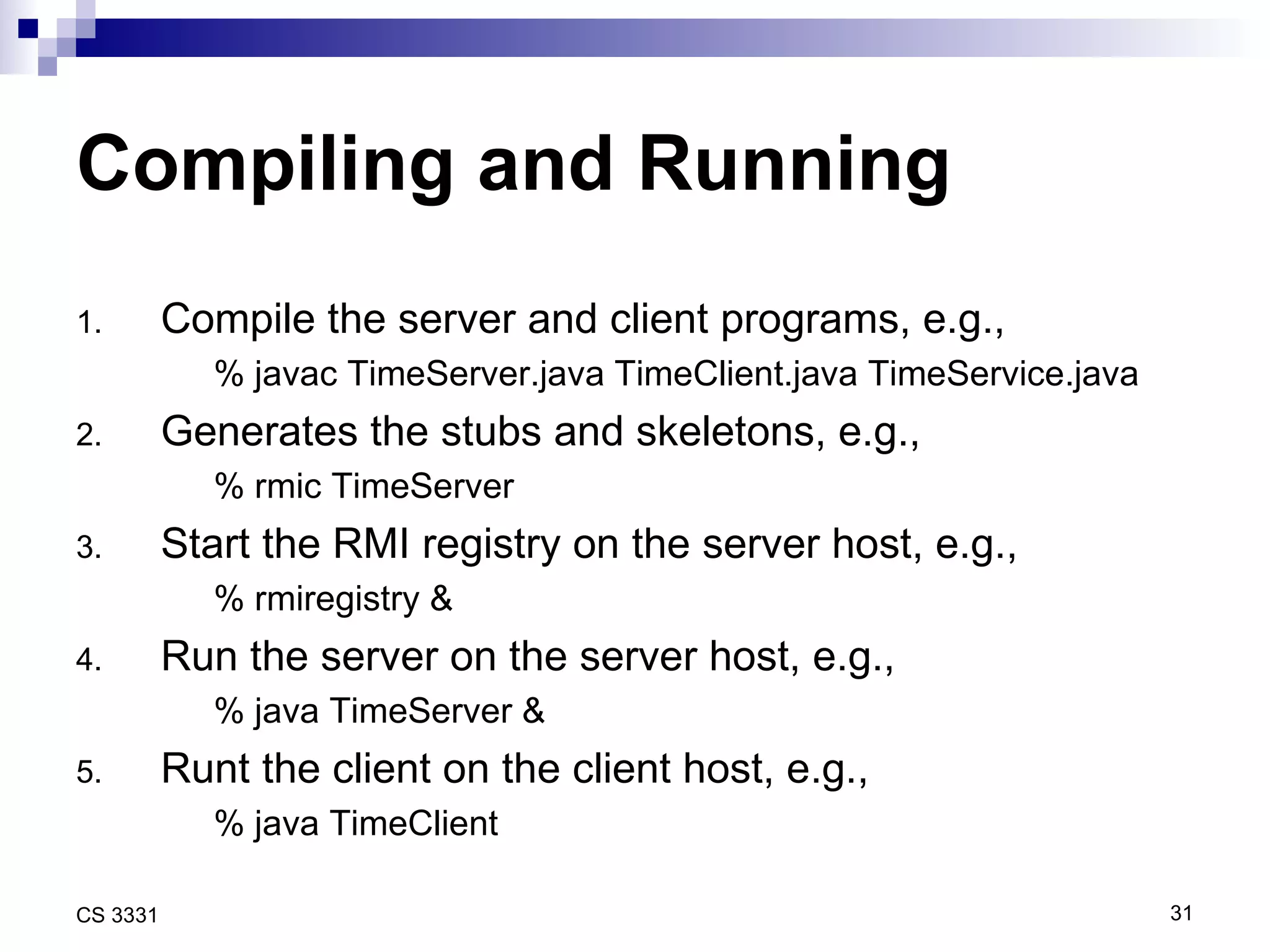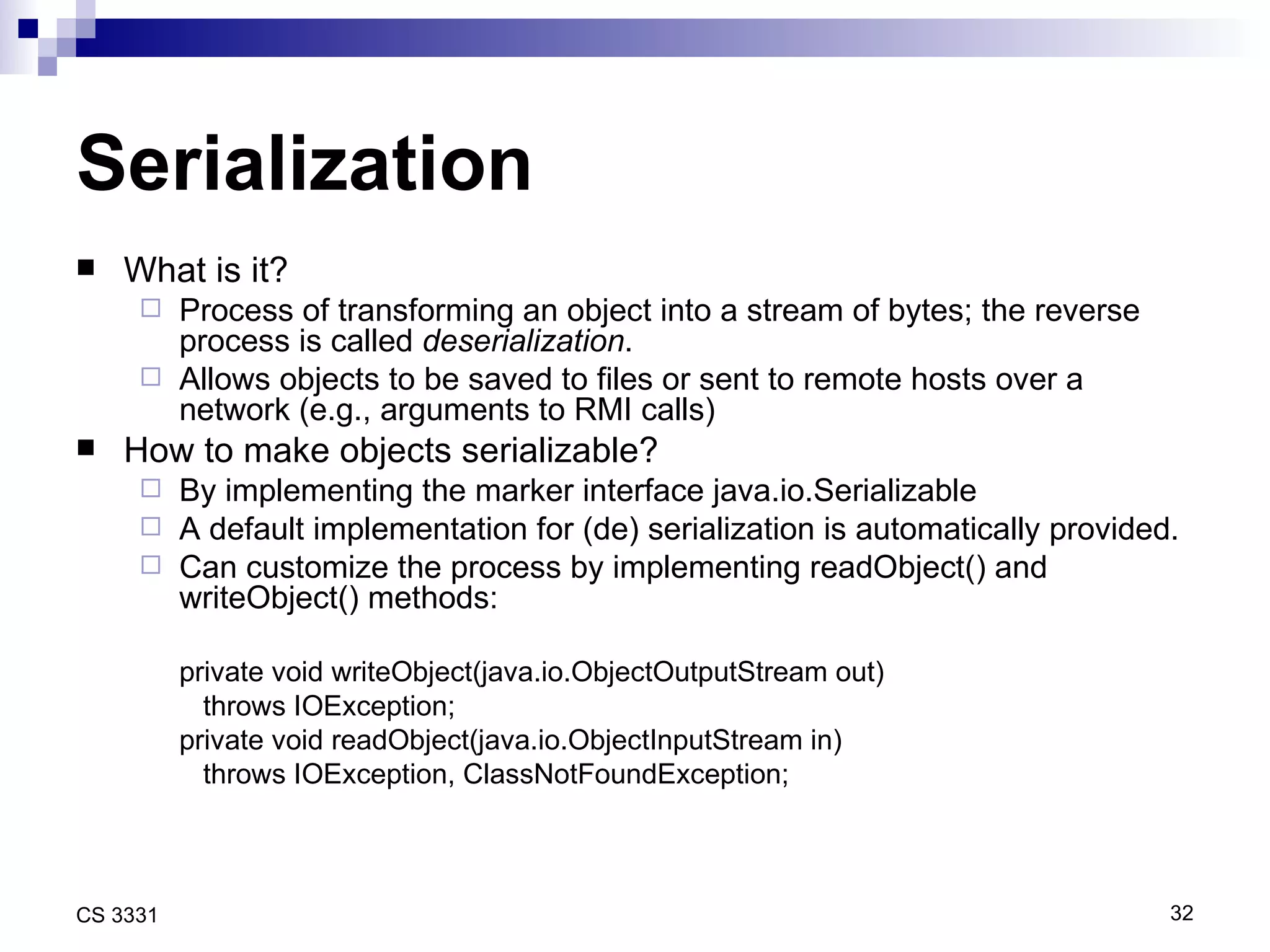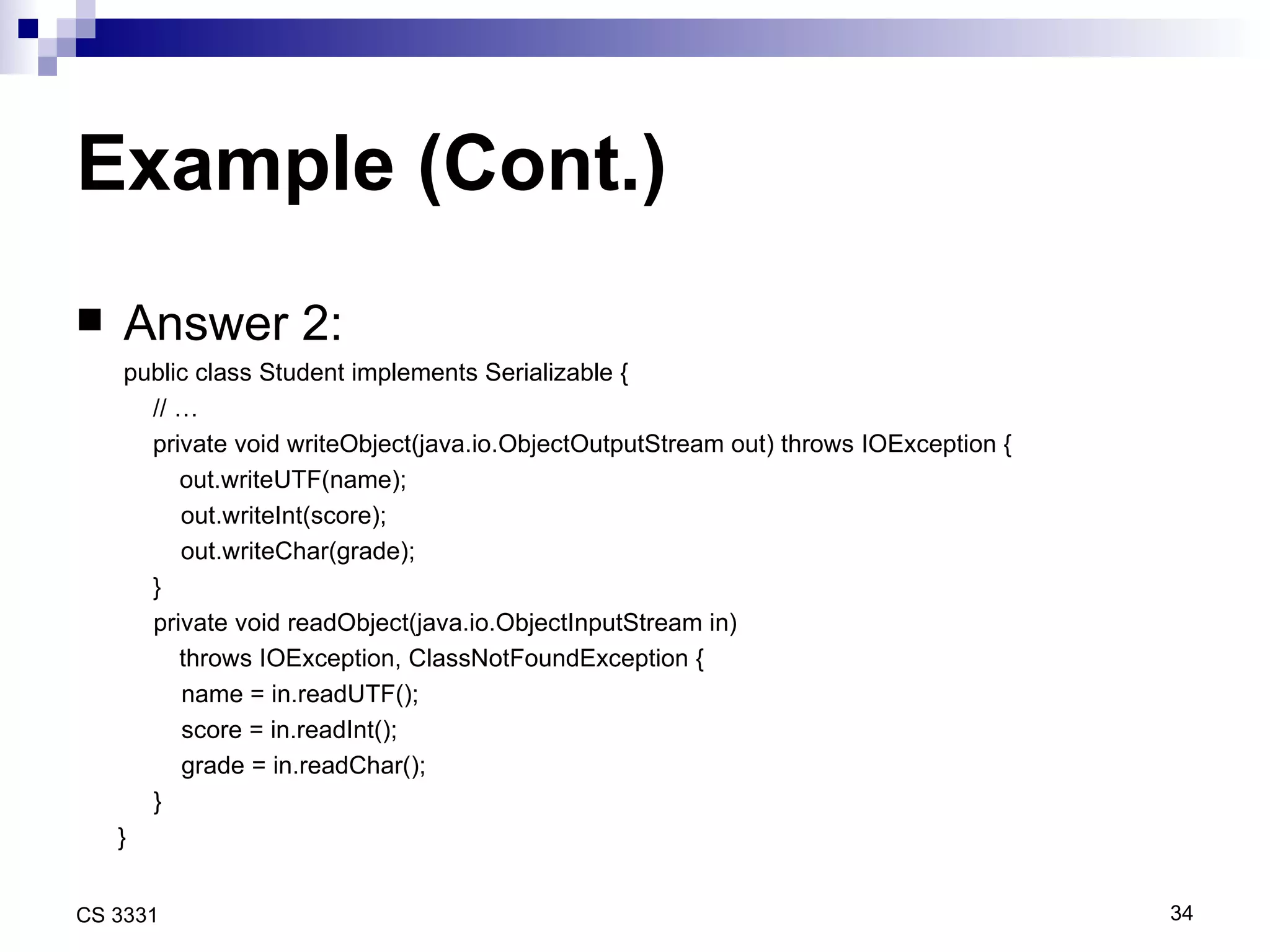The document discusses socket programming and remote method invocation (RMI). It provides details on socket programming concepts like server sockets, client sockets, and examples of a simple echo server and client. It then covers RMI concepts such as locating and invoking remote objects, writing RMI programs, and using serialization to pass objects between clients and servers.
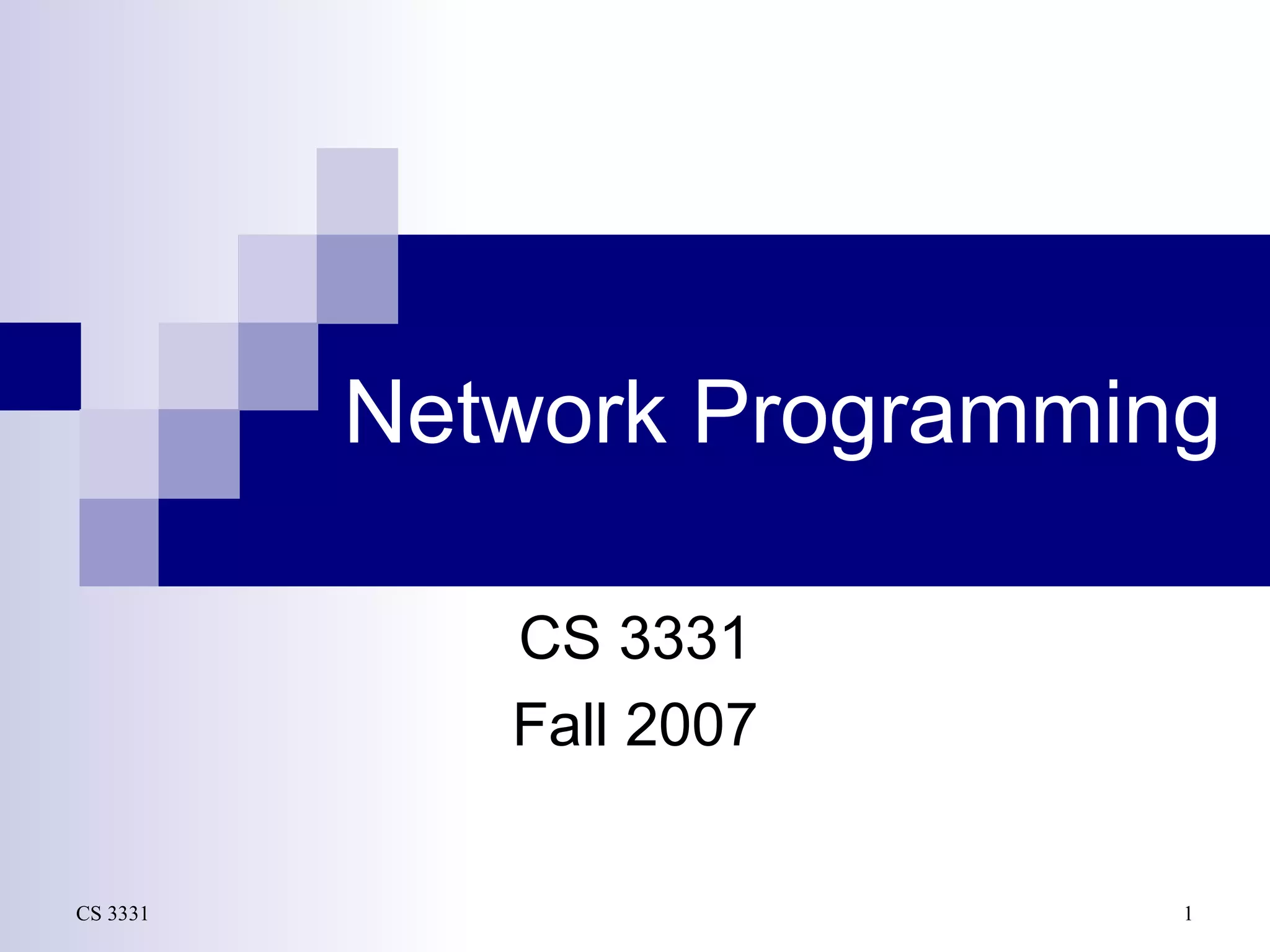
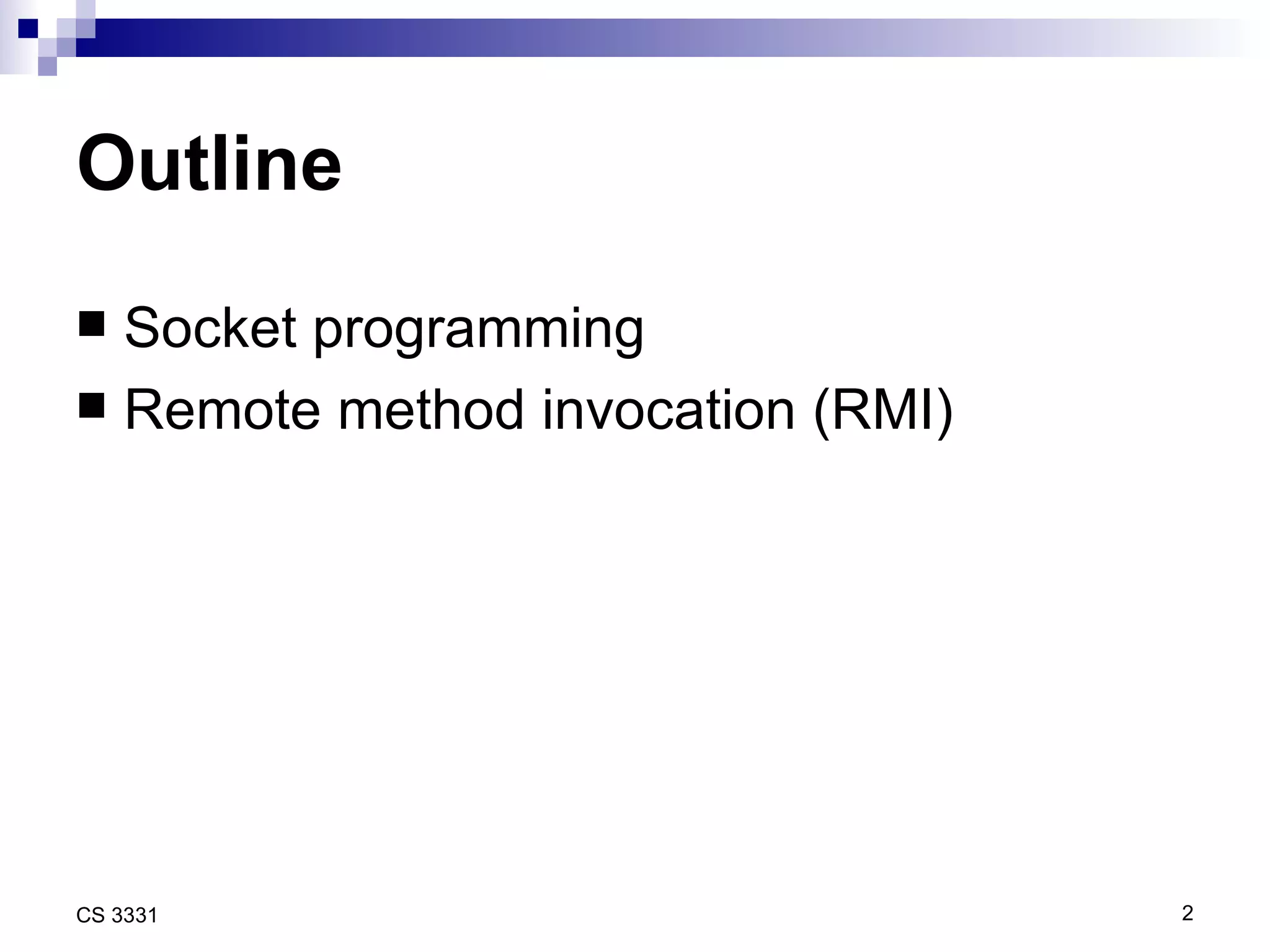
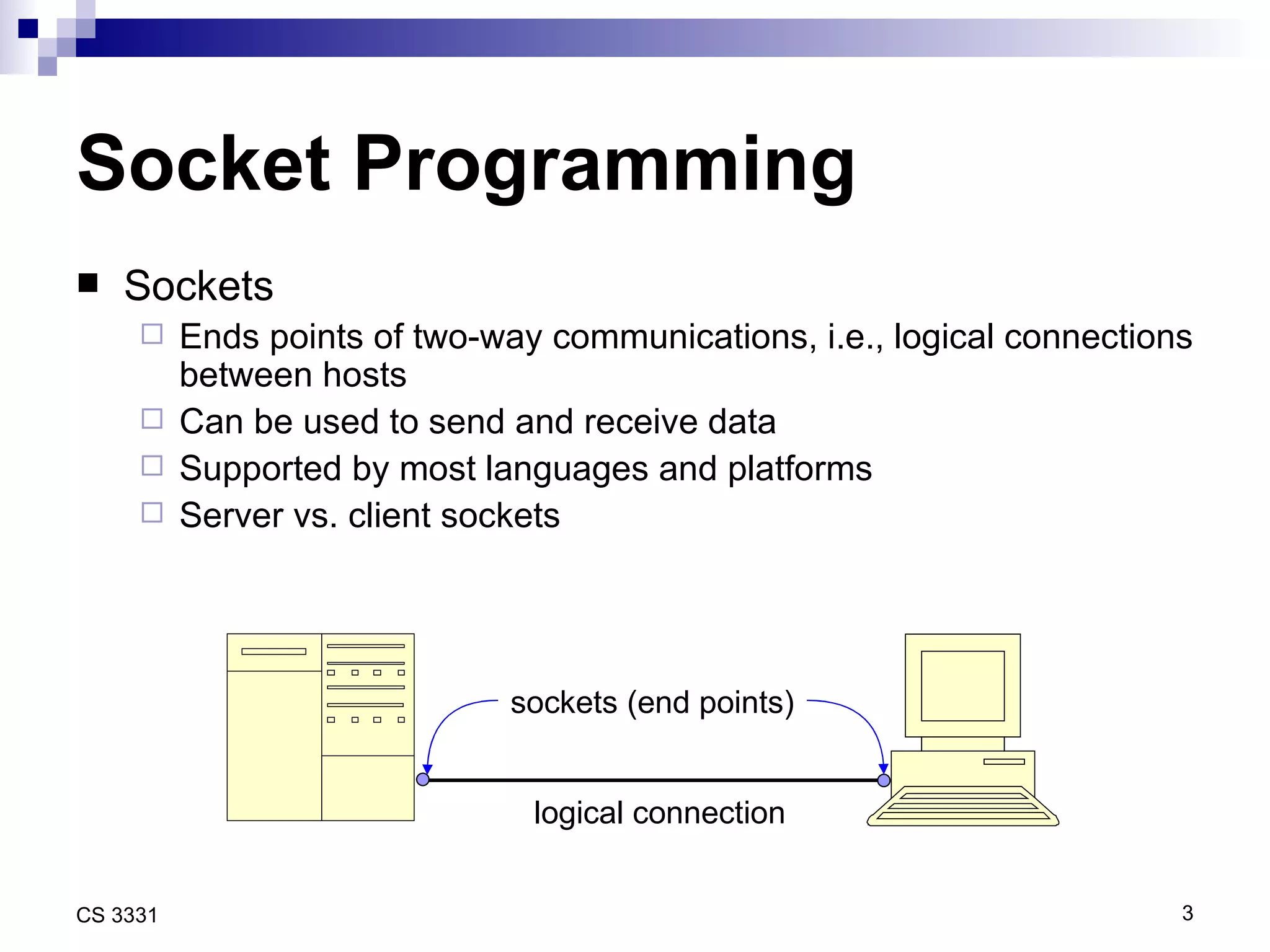

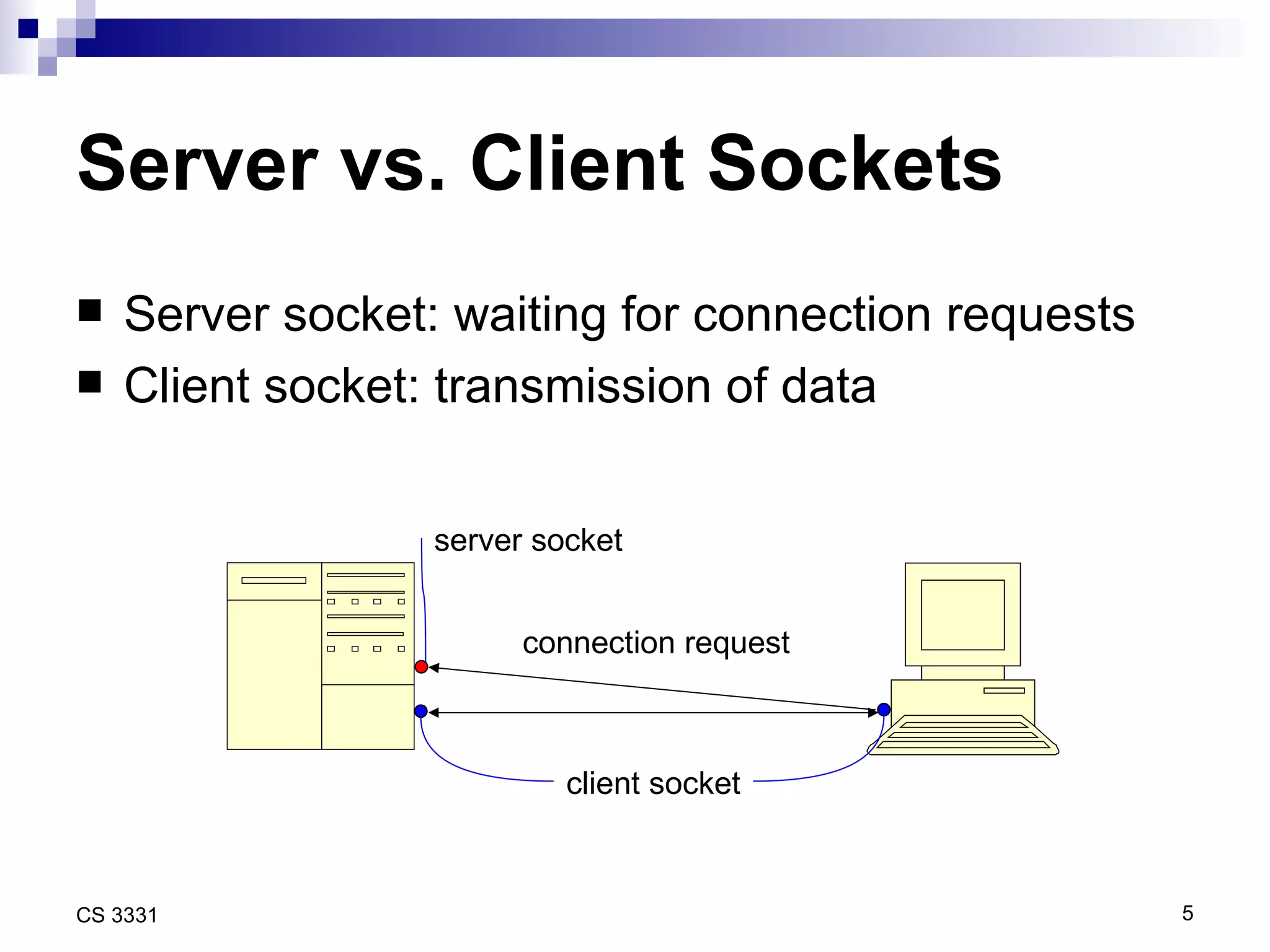
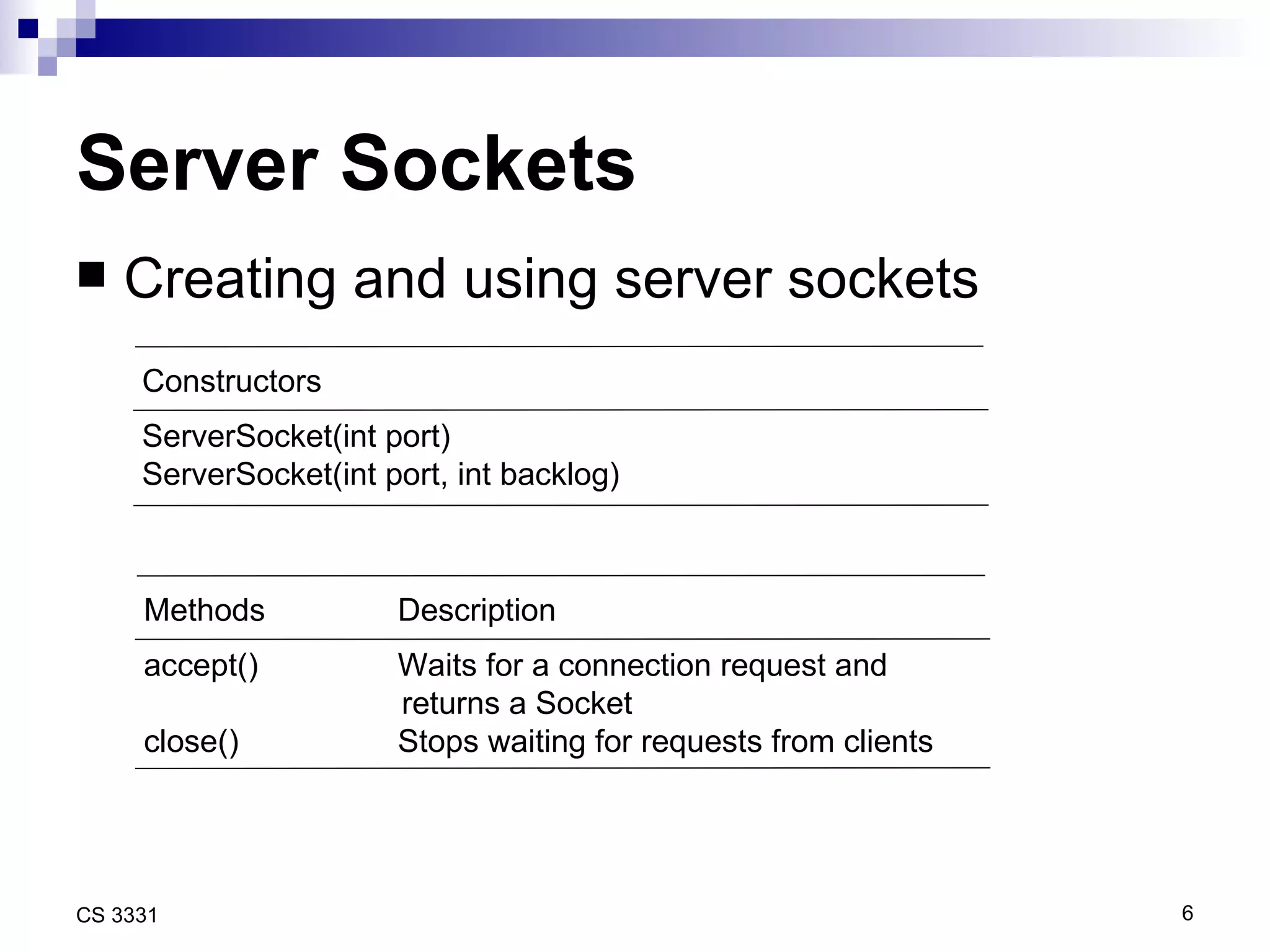

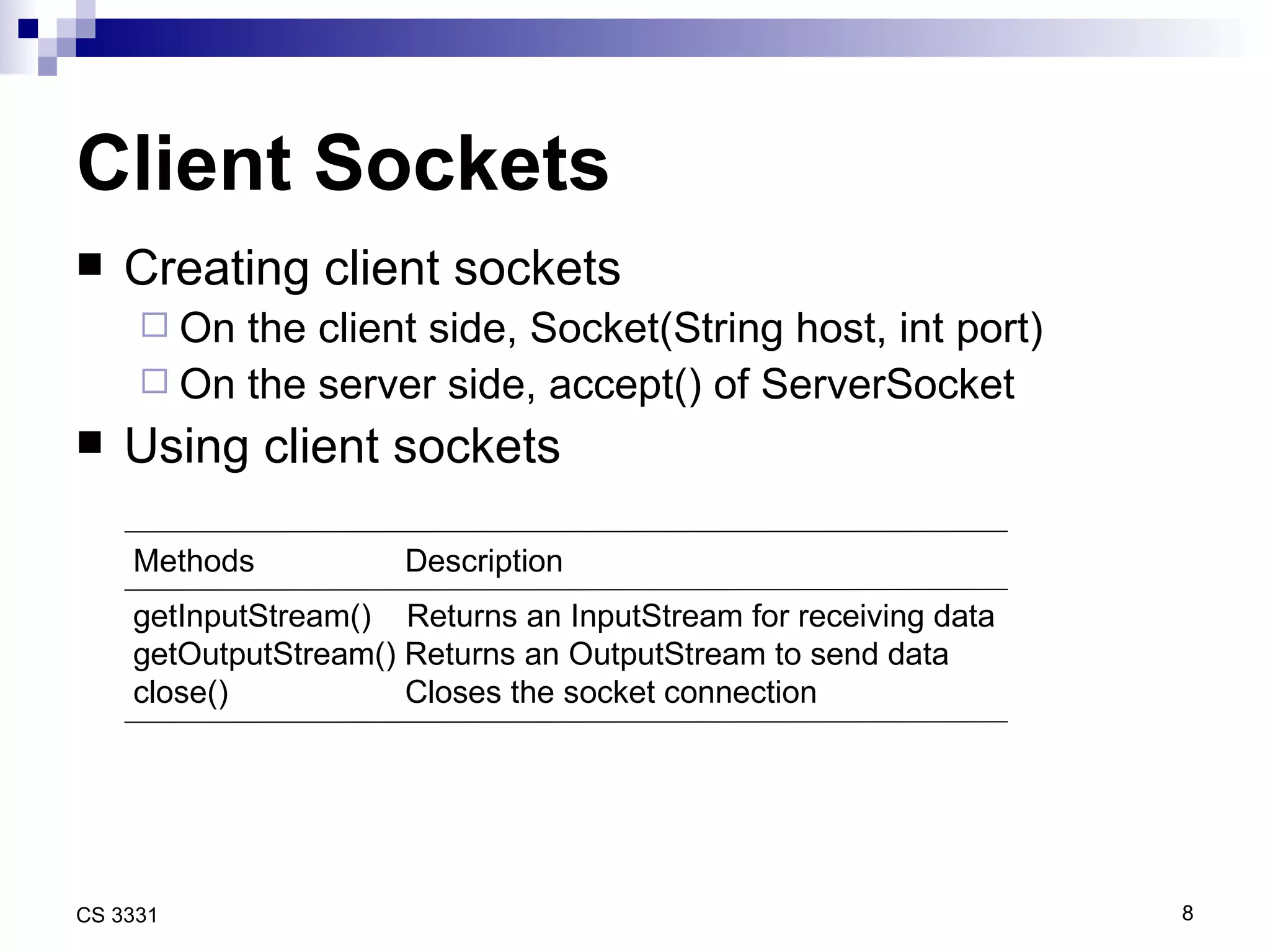
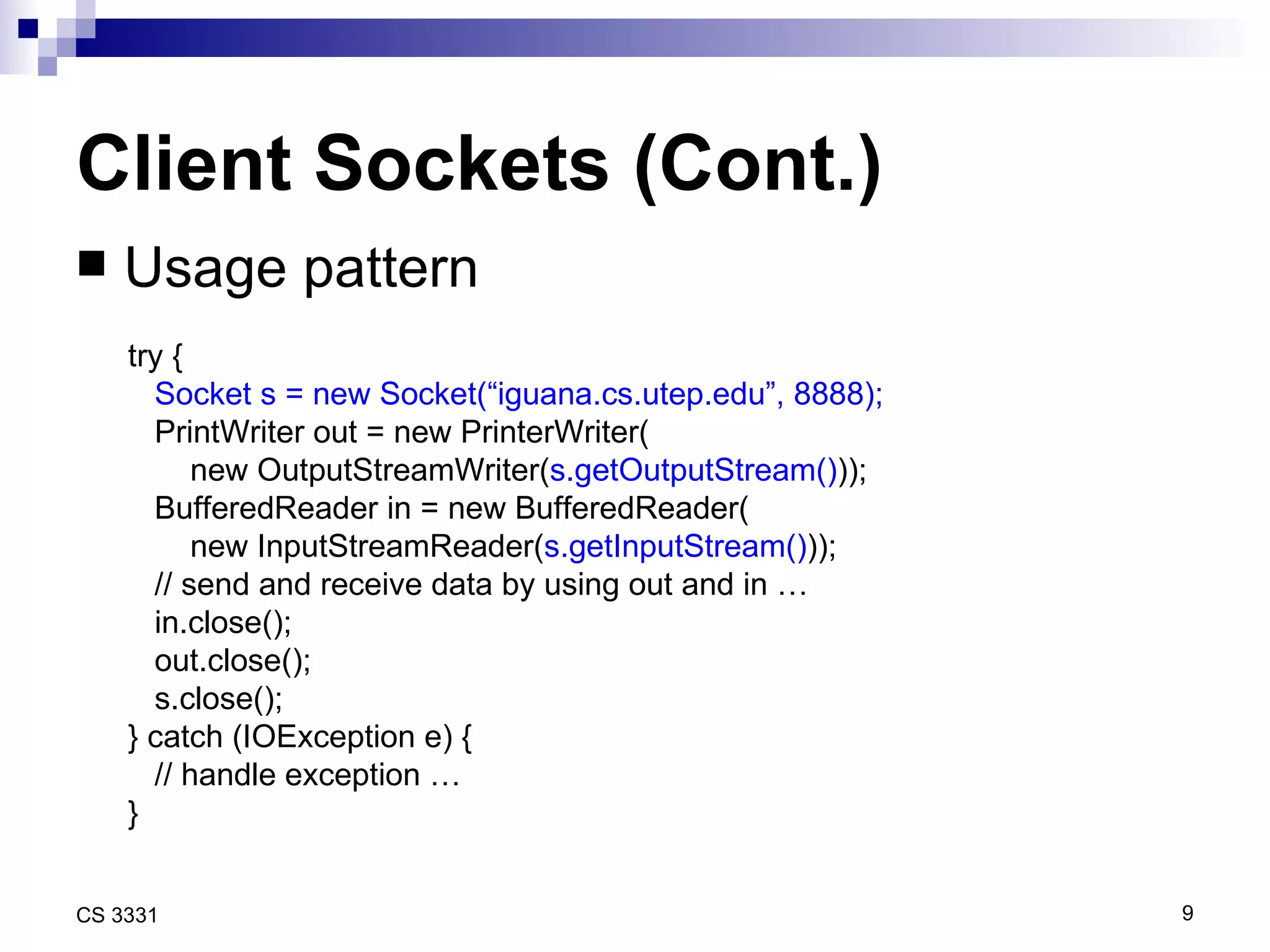
![Example -- A Simple Echo Server import java.io.*; import java.net.*; public class EchoServer { public static void main(String[] args) { try { ServerSocket server = new ServerSocket(8008); while (true) { Socket s = server.accept(); BufferedReader in = new BufferedReader(new InputStreamReader( s.getInputStream())); PrintWriter out = new PrinterWriter(new OutputStreamWriter( s.getOutputStream())); << handle client by using in and out >> s.close(); } } catch (Exception e) { e.printStackTrace(); } } }](https://image.slidesharecdn.com/network-091011054658-phpapp01/75/Network-10-2048.jpg)
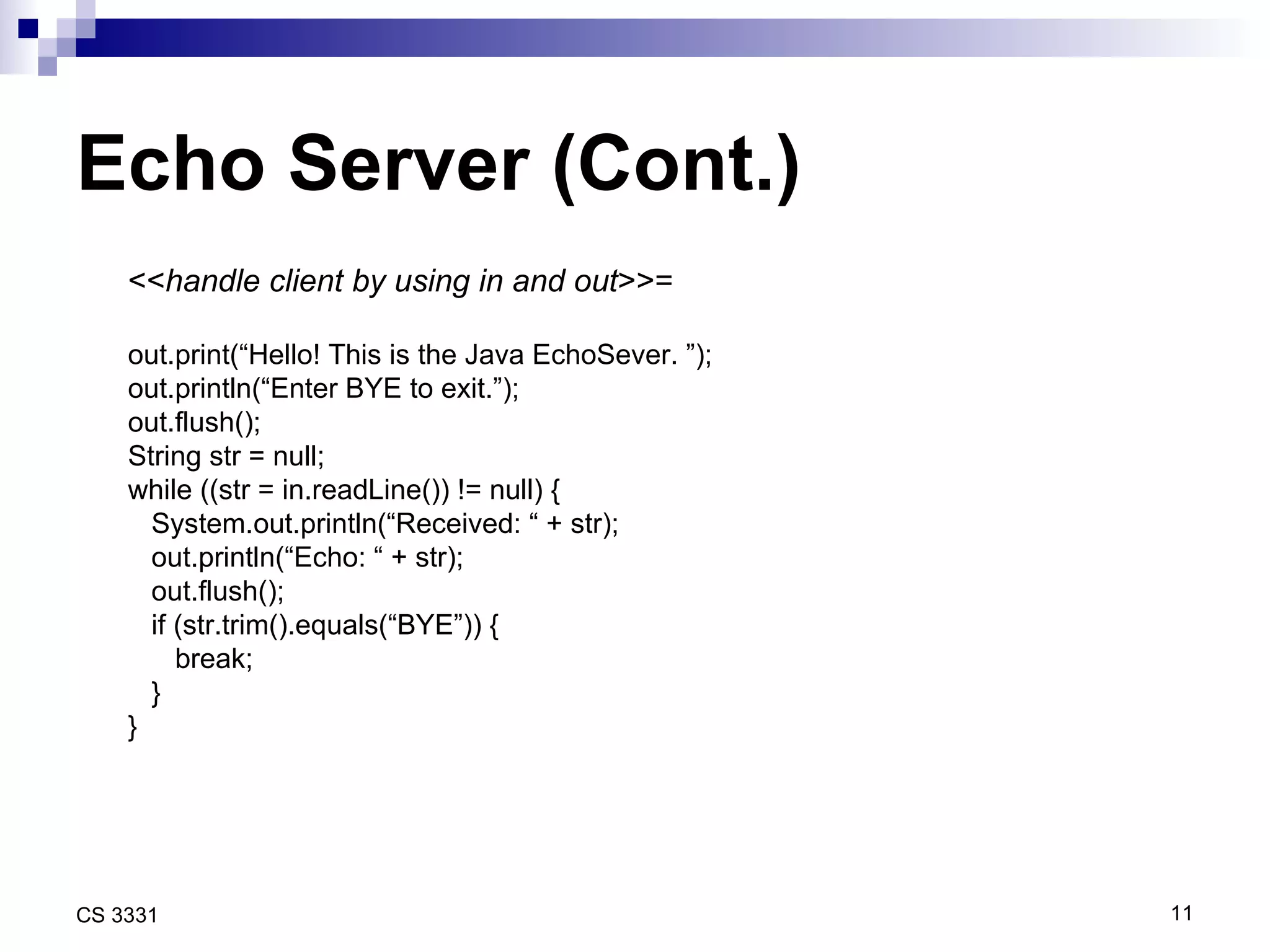
![Testing Echo Server Testing with telnet client aspect% telnet localhost 8008 Trying 127.0.0.1 … Connected to localhost. Escape character is ‘^]’. Hello! This is the Java EchoServer. Enter BYE to exit. Hello? Echo: Hello? Where are you? Echo: Where are you? BYE Echo: BYE Connection to host lost.](https://image.slidesharecdn.com/network-091011054658-phpapp01/75/Network-12-2048.jpg)
![A Simple Echo Client import java.io.*; import java.net.*; public class EchoClient { public static void main(String[] args) { String host = (args.length > 0 ? host = args[0] : “localhost”; try { Socket socket = new Socket(host, 8008); BufferedReader in = new BufferedReader(new InputStreamReader( socket.getInputStream())); PrintWriter out = new PrinterWriter(new OutputStreamWriter( socket.getOutputStream())); << send and receive data by using in and out >> socket.close(); } catch (Exception e) { e.printStackTrace(); } } }](https://image.slidesharecdn.com/network-091011054658-phpapp01/75/Network-13-2048.jpg)
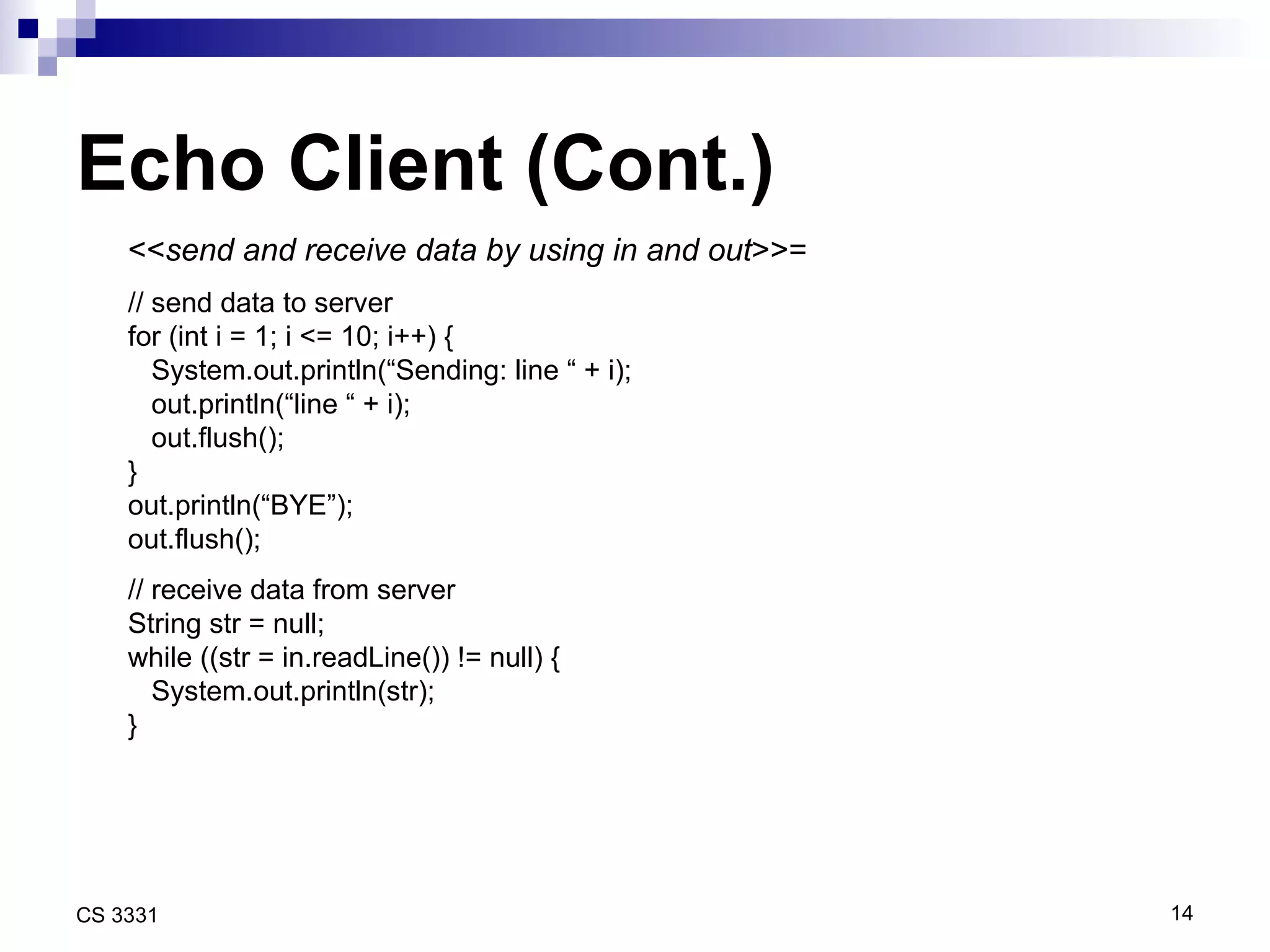
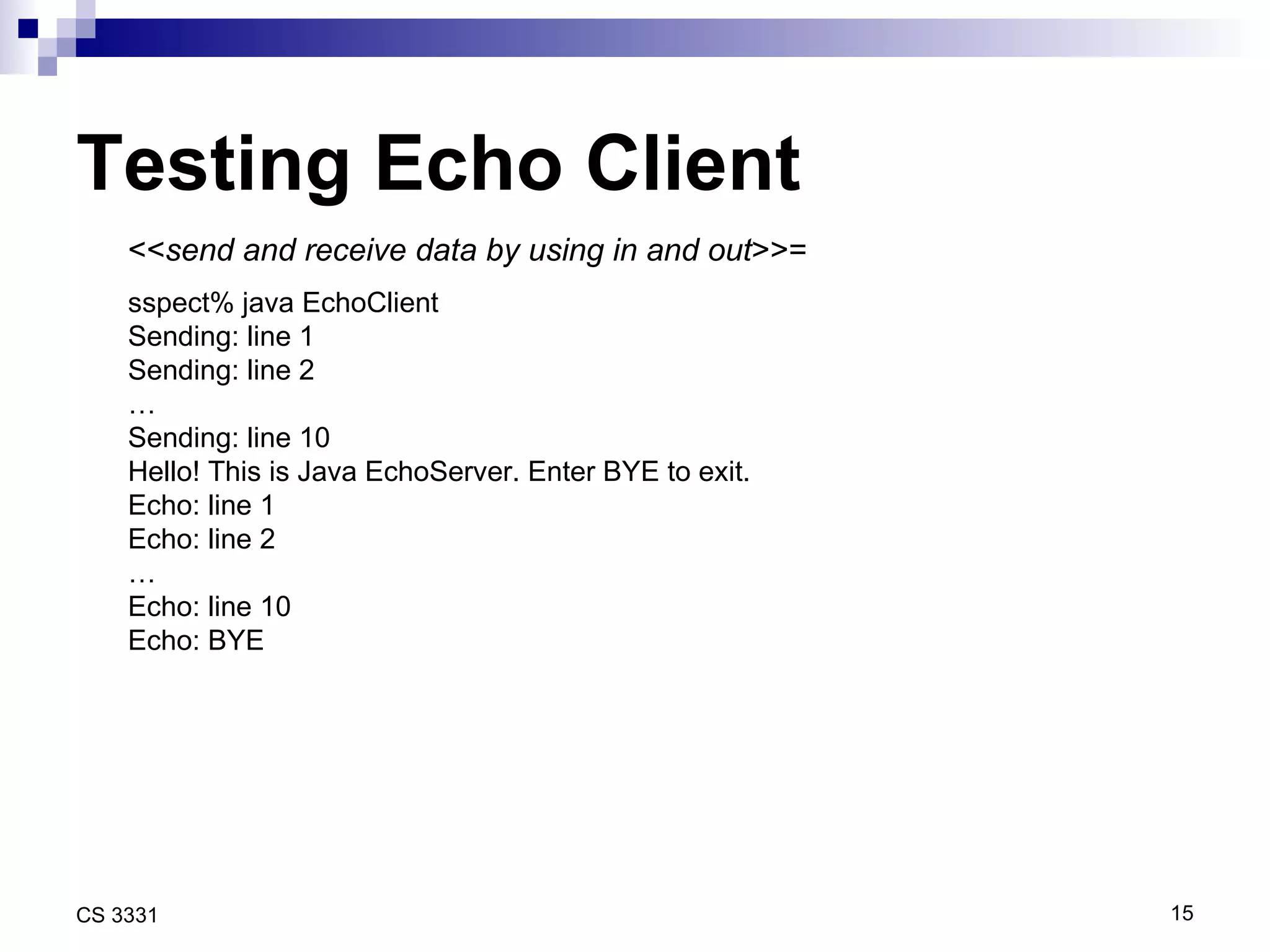
![Echo Server Revisited How to support multiple clients simultaneously? import java.io.*; import java.net.*; public class MultiEchoServer { public static void main(String[] args) { try { ServerSocket server = new ServerSocket(8008); while (true) { Socket s = server.accept(); new ClientHandler(s).start(); } } catch (Exception e) { e.printStackTrace(); } } << class ClientHandler >> }](https://image.slidesharecdn.com/network-091011054658-phpapp01/75/Network-16-2048.jpg)
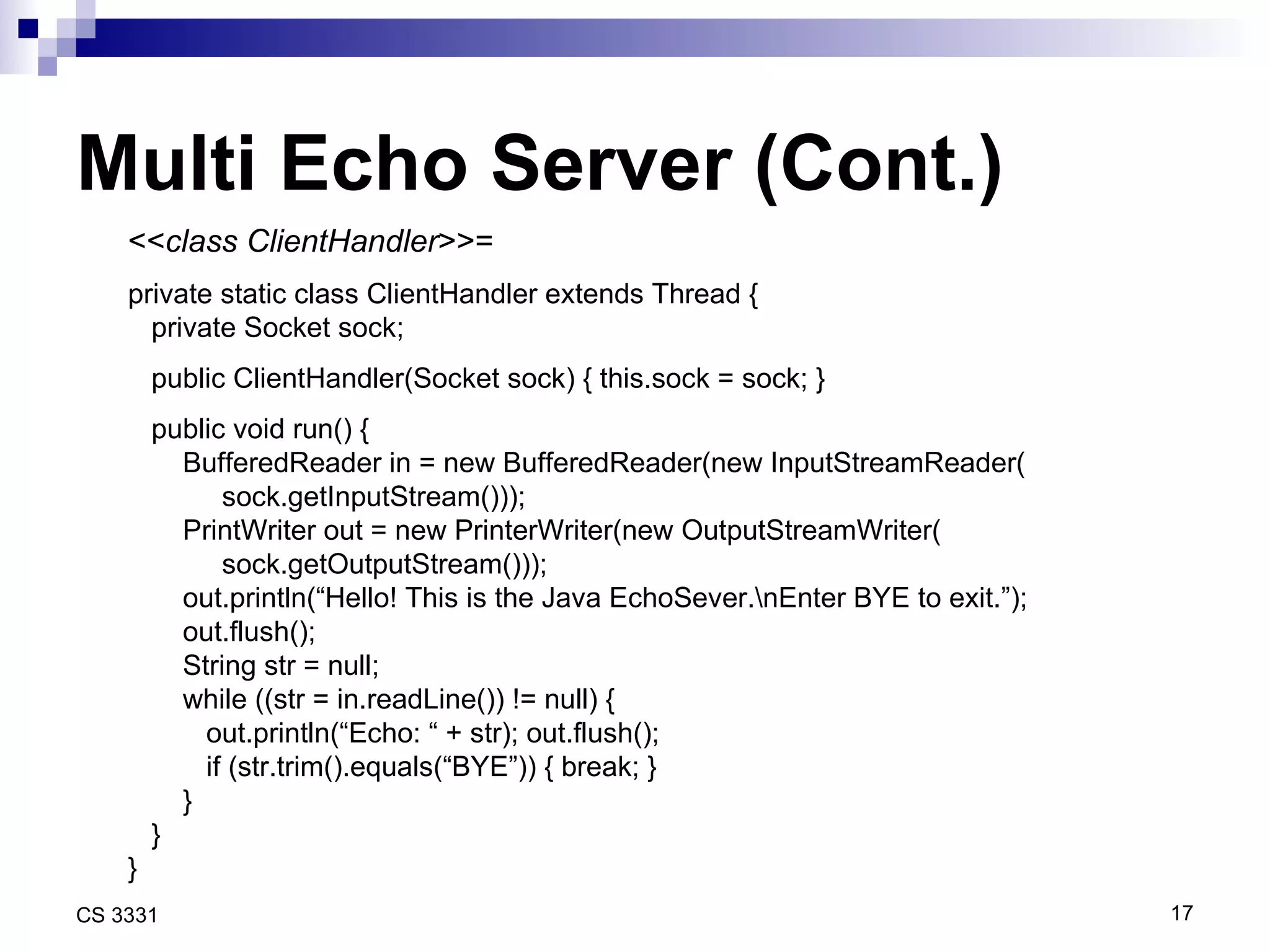

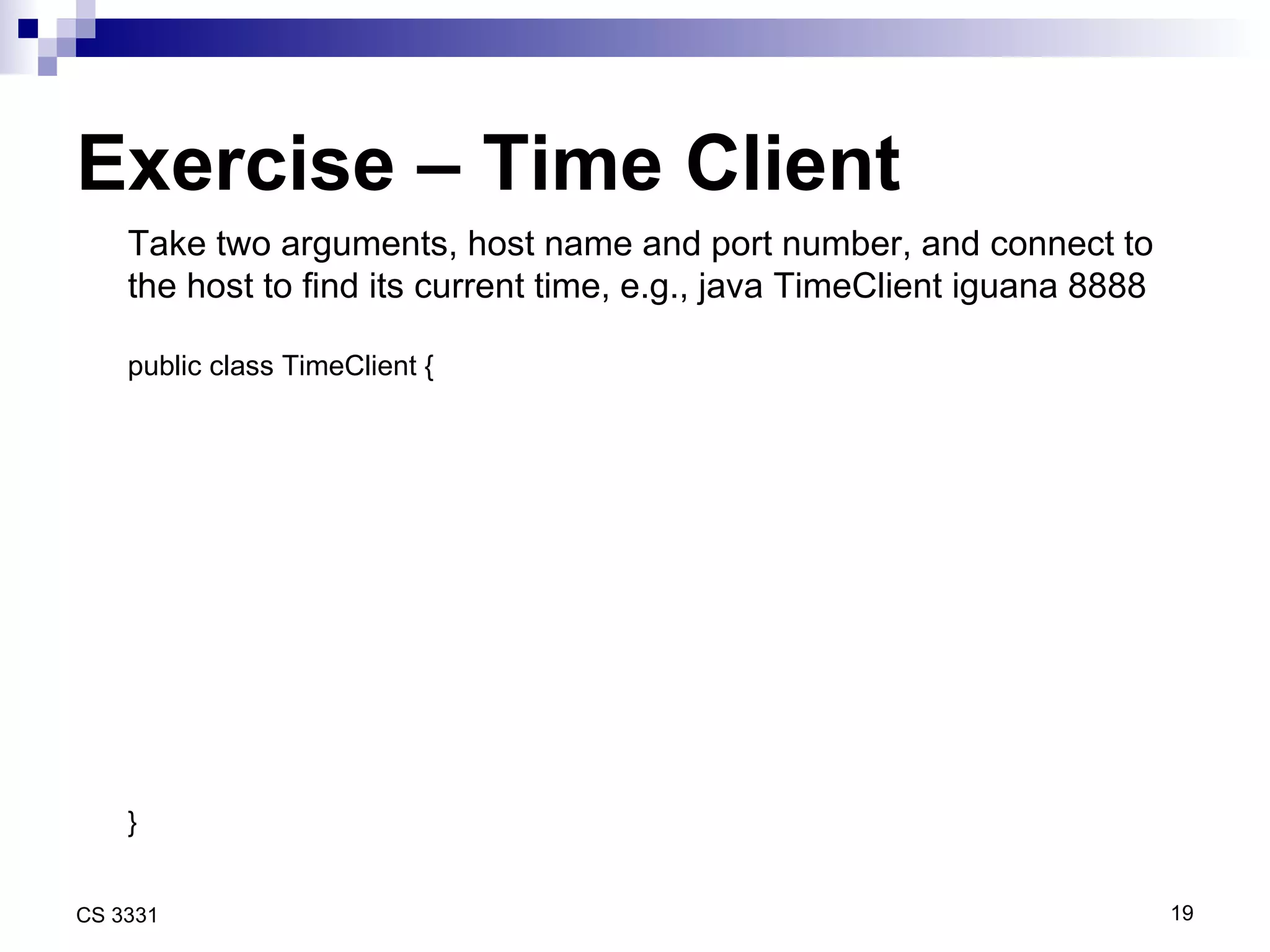
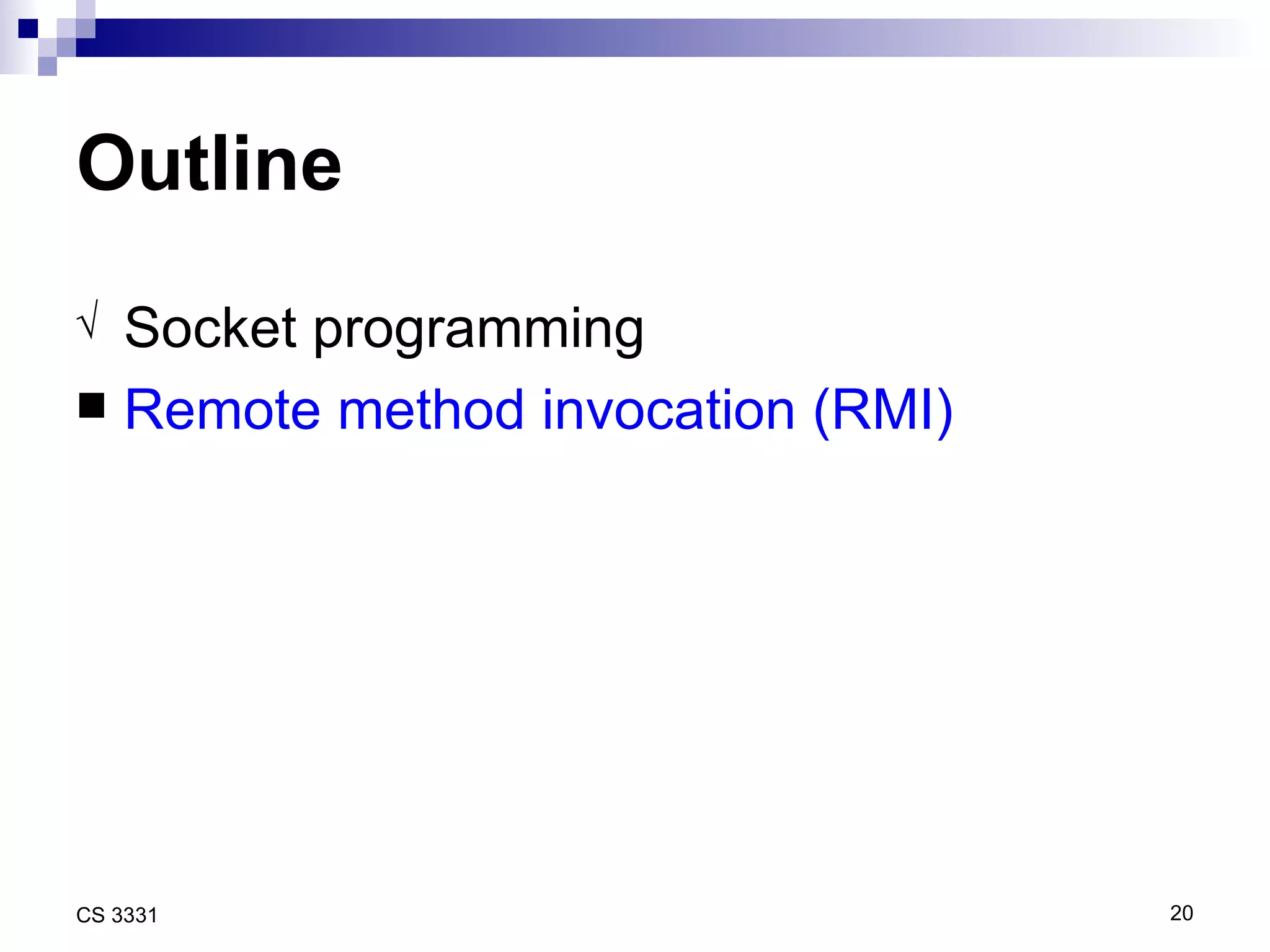
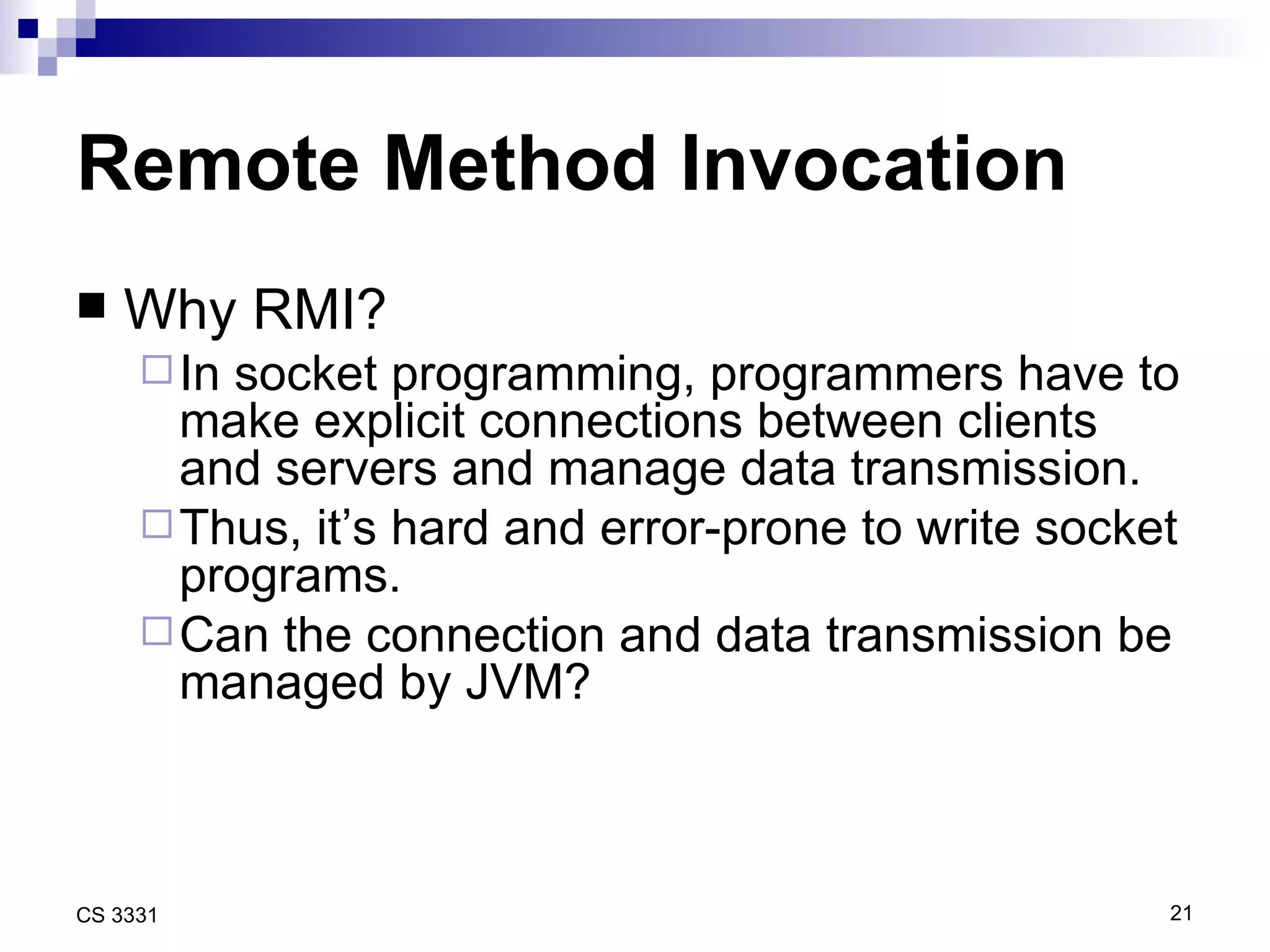
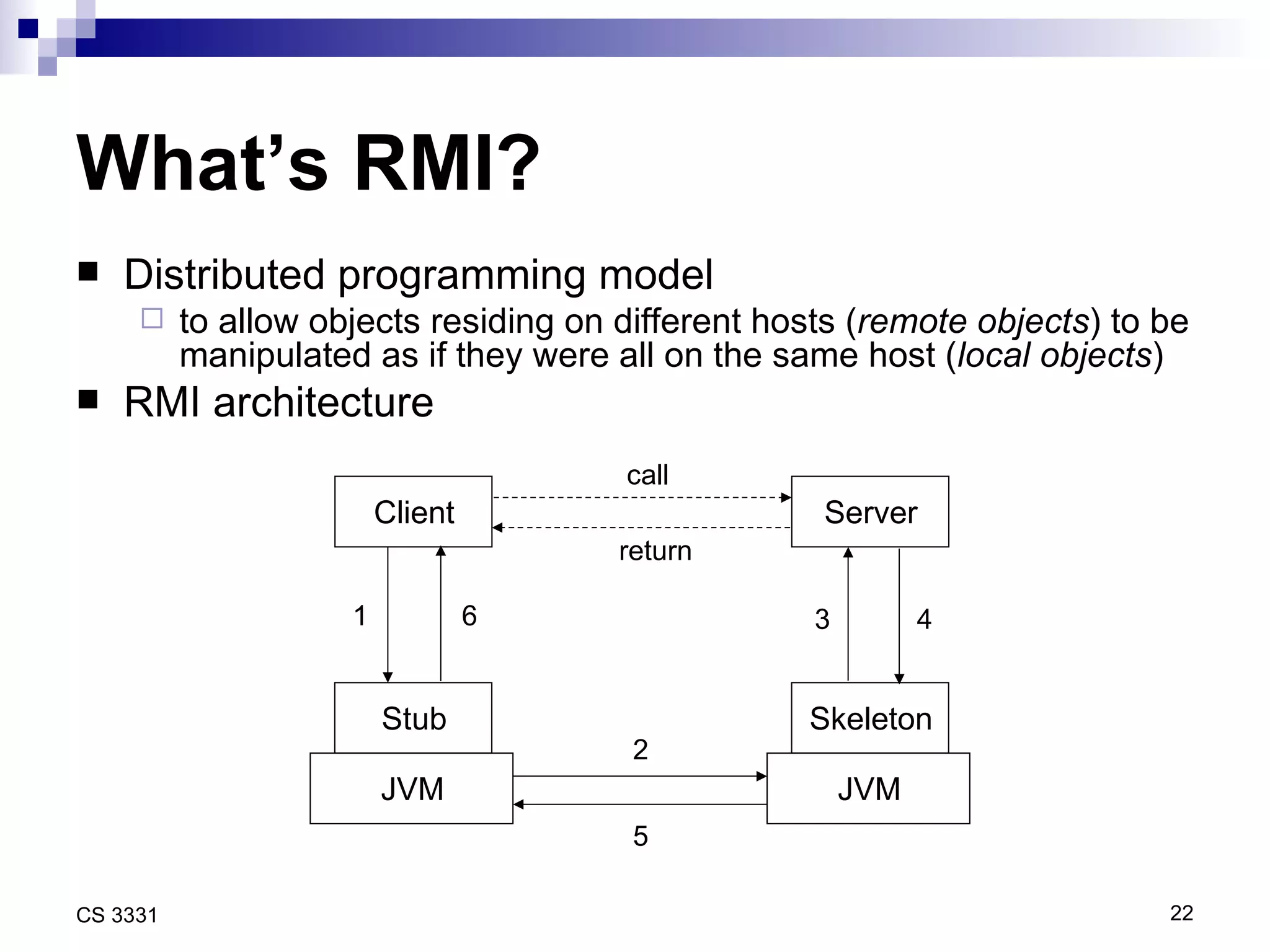

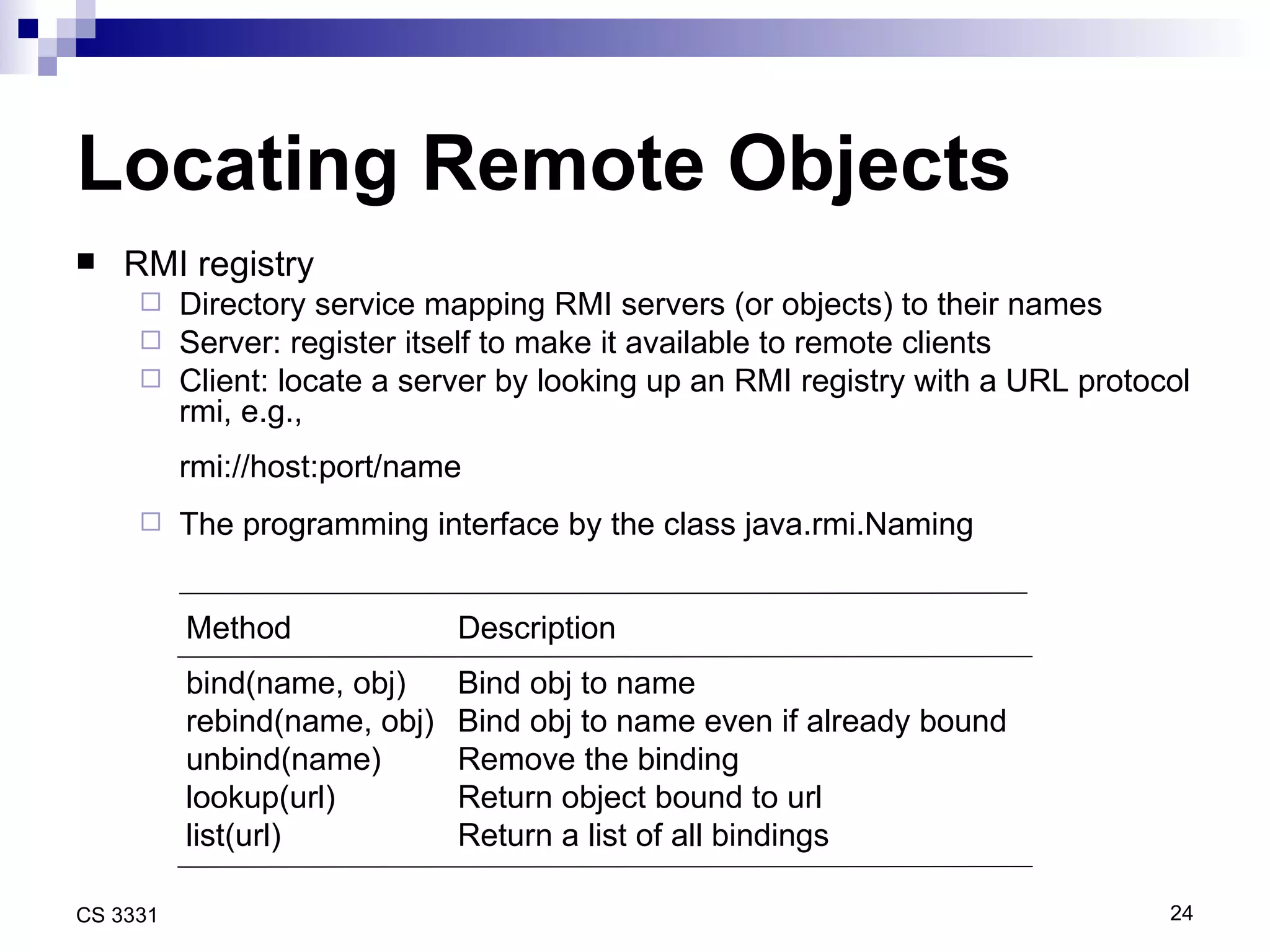
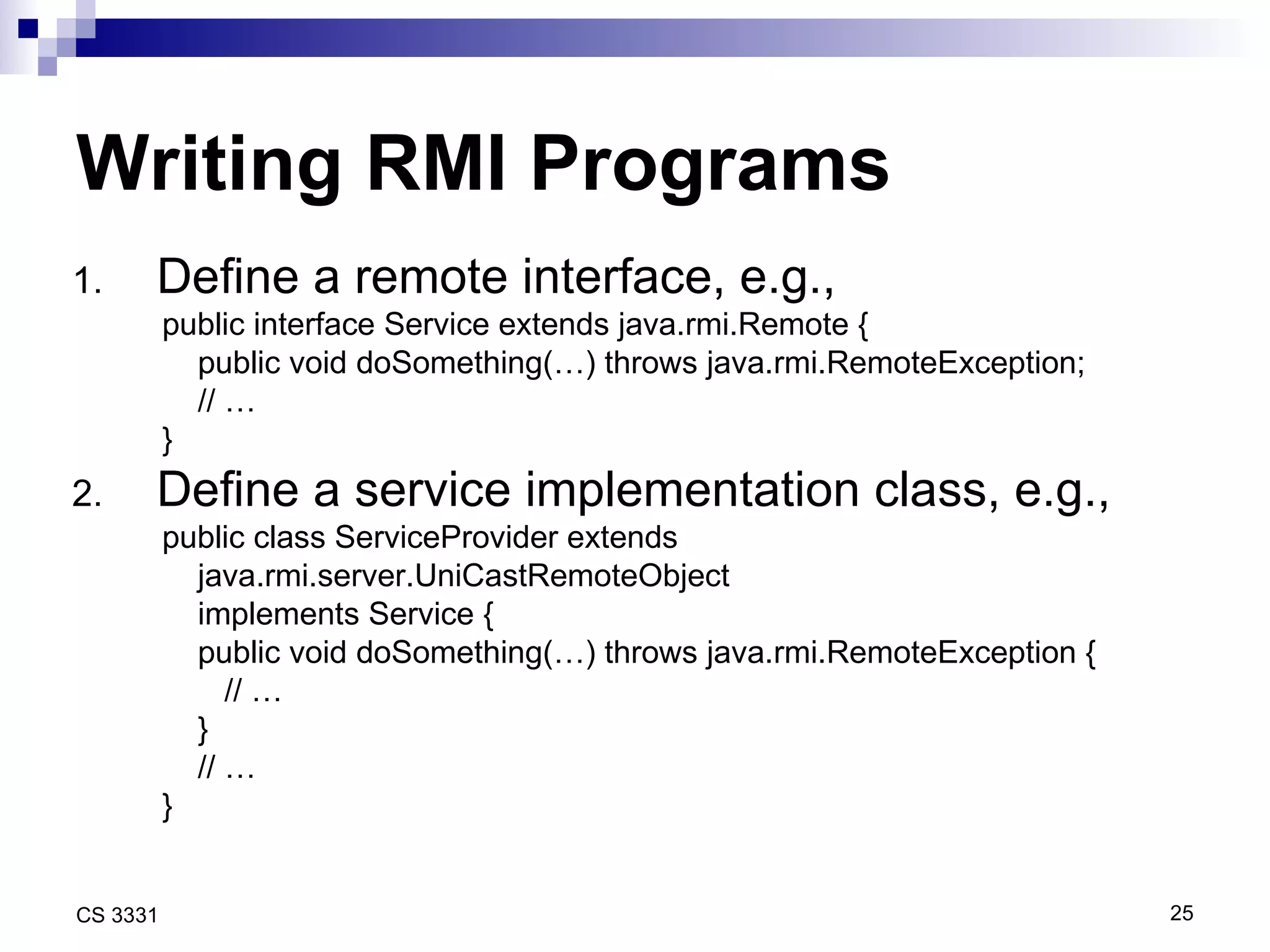
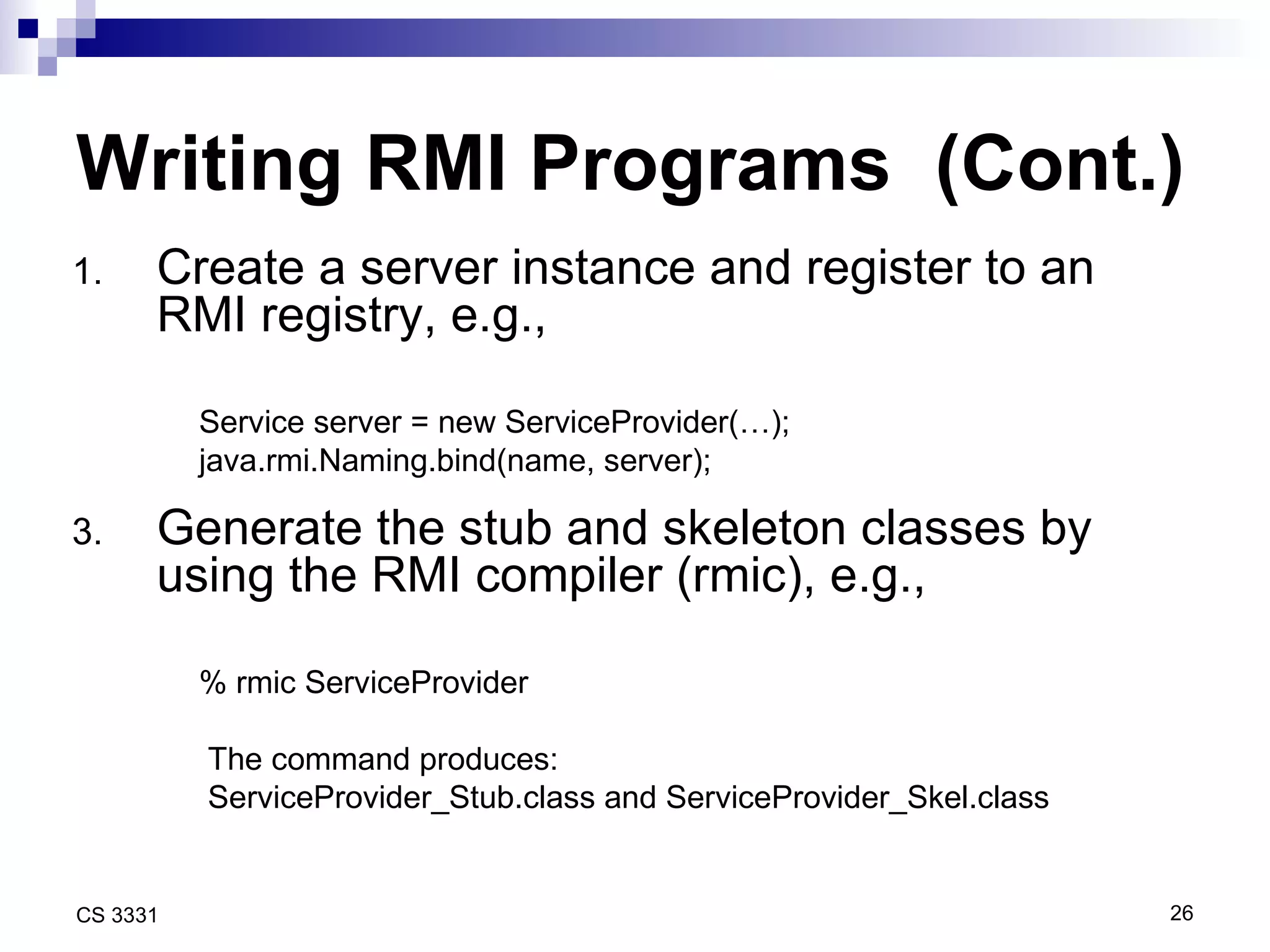
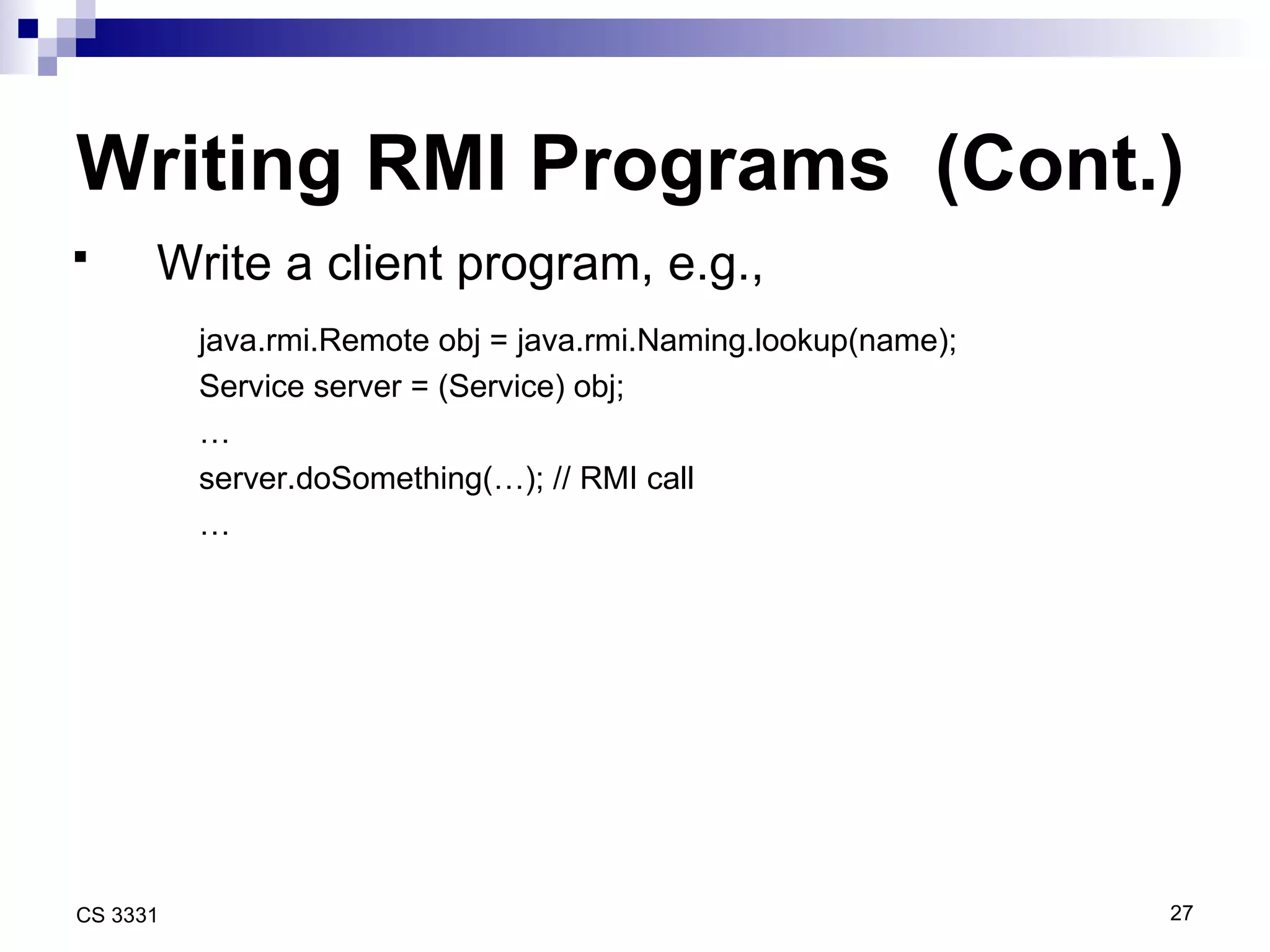
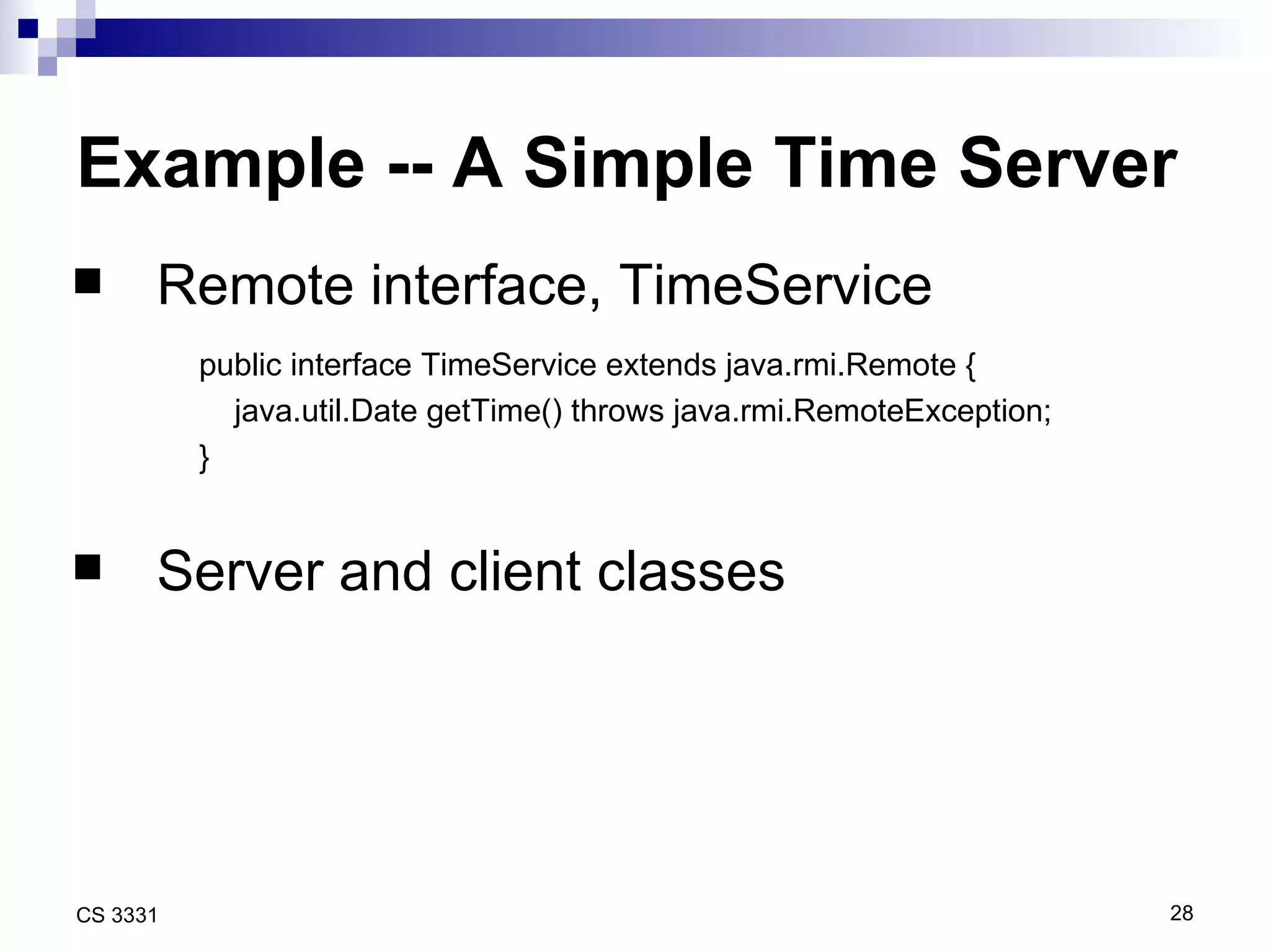
![A Server Class, TimeServer import java.rmi.*; improt java.util.*; public class TimeServer extends java.rmi.server.UnicastRemoteObject implements TimeService { public TimeServer() throws RemoteException {} public Date getTime() { return Calendar.getInstance().getTime(); } public static void main(String [] args) { try { TimeServer server = new TimeServer(); Naming.rebind("TimeServer", server); } catch (Exception e) { e.printStackTrace(); } } }](https://image.slidesharecdn.com/network-091011054658-phpapp01/75/Network-29-2048.jpg)
![A Client Class, TimeClient import java.rmi.*; improt java.util.*; public class TimeClient { public static void main(String [] args) { try { TimeService server = (TimeService) Naming.lookup("rmi://localhost/TimeServer"); System.out.println(server.getTime()); } catch (Exception e) { e.printStackTrace(); } } }](https://image.slidesharecdn.com/network-091011054658-phpapp01/75/Network-30-2048.jpg)
